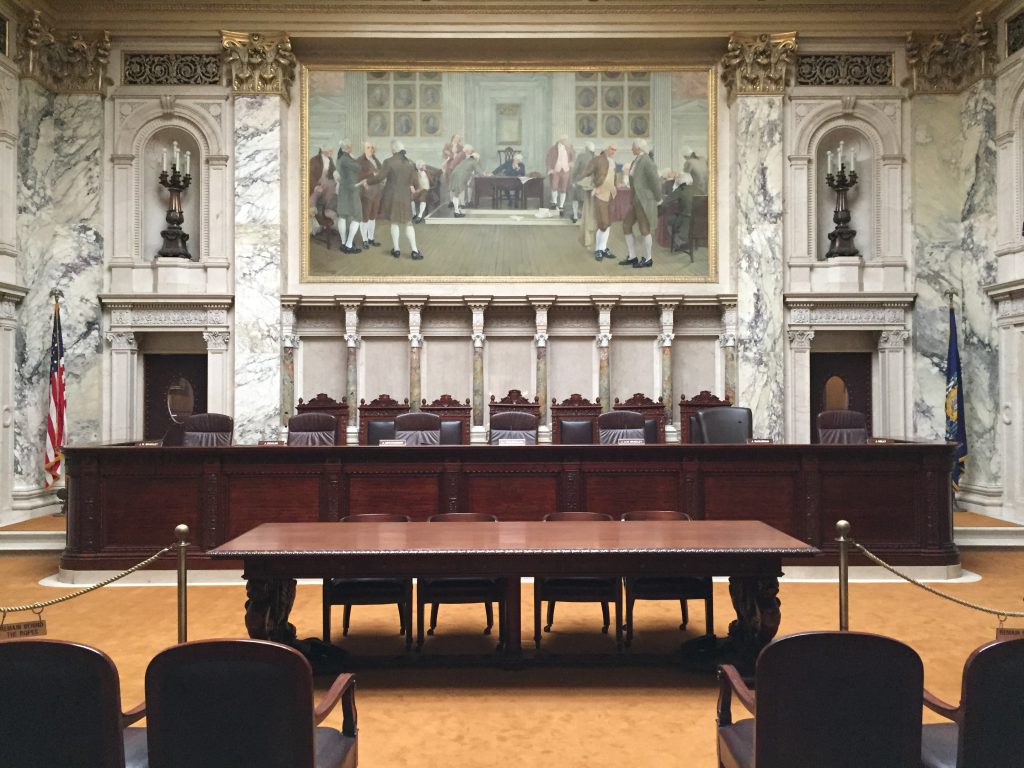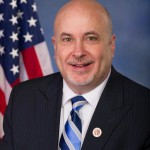Will State Supreme Court Draw New Legislative Boundaries?
Chief Justice is leery of the court expanding its role in redistricting. Conservatives want it to be the final arbiter of new district maps.
The conservative chief justice of the Wisconsin Supreme Court signaled Thursday she was wary of a Republican-backed plan that would give the court more power over the next round of redistricting.
The petition, which was filed by the Wisconsin Institute for Law and Liberty (WILL), would send all state redistricting lawsuits directly to the Wisconsin Supreme Court, opening the door for justices to draw their own maps in the process.
“Counsel, we do cases and controversies,” Roggensack said. “What your rule does is it permits this court to draw the lines.”
WILL filed the petition in June, beginning a legal fight that could last years and take myriad twists and turns before it’s resolved.
States redraw their legislative boundaries every 10 years following the release of U.S. Census data, a process designed to keep districts roughly equal in population. But who draws the maps — and which courts hear them — could go a long way toward deciding who holds power in Wisconsin beginning with the 2022 election and extending for a decade beyond.
Republicans controlled both the Legislature and the governor’s office during the last round of redistricting in 2011, which let them draw district lines that gave their candidates a political edge over the past decade.
WILL’s petition argues because the Republican-controlled Legislature and Democratic Gov. Tony Evers are unlikely to agree on a new redistricting plan, the Wisconsin Supreme Court should be ready to handle any lawsuits that are all but certain to be filed.
But WILL’s petition would let the Legislature, governor or a state political party file a lawsuit with the court as soon as census data is released rather than waiting until after a new map is drawn.
“It doesn’t say anything in there about giving responsibility to the courts and drawing maps,” Roggensack said.
Beyond constitutional concerns, Roggensack also raised practical issues, suggesting even if it wanted to, the court was ill-equipped to handle the intensive map-drawing process.
“Drawing maps would take a huge staff. We don’t have them,” Roggensack said. “I don’t know how in the world you think the court could ever draw the maps.”
Esenberg told Roggensack the Legislature and governor would still be given the chance to agree to a map while a redistricting lawsuit was pending.
“This court is not going to act as a cartographer and start from scratch,” Esenberg said.
Federal courts have played a much bigger role in Wisconsin’s most recent redistricting battles. In 2012, a three-judge federal panel ordered parts of two Milwaukee Assembly districts redrawn. In 2016, a federal panel ruled the entire GOP redistricting plan unconstitutional before the U.S. Supreme Court remanded the case.
New rule or not, there would likely be nothing preventing the Wisconsin Supreme Court from hearing a redistricting lawsuit through the usual channels of the state court system. The question is how quickly it would get there and how much leeway the court would have to draw its own lines once a case arrives.
“What you’re asking for is just to be able to rocket docket these cases immediately to this court,” said Justice Jill Karofsky, one of the court’s liberals.
While the process suggested by WILL would be new, the idea that the Wisconsin Supreme Court should be more prepared for redistricting lawsuits dates back almost 20 years to a previous round of redistricting.
Former Republican Assembly Speaker Scott Jensen, who was one of the parties to that case, joined with WILL to bring this latest petition, framing the move as carrying out the court’s wishes from two decades ago.
“The only reason the court didn’t draw these maps in 2002 was because time was running out,” Jensen said.
Justices considered setting up a new process for state redistricting lawsuits in the years after Jensen’s original case, but they ultimately walked away from that idea in 2009, voting 4-3 to keep the system as it is. Roggensack and fellow conservative Justice Annette Ziegler were among those on the court in 2009 who voted against setting up a new redistricting process.
At Thursday’s hearing, the vast majority of those who testified spoke out against such a move, suggesting it would further politicize the court at a time when the public needs to trust the judicial system.
“Rather than just review the redistricting process, the court would be a player in the game,” said Annabelle Harless, an attorney for the Campaign Legal Center, a national group that was instrumental in the 2016 U.S. Supreme Court challenge to Wisconsin’s redistricting plan.
While he can’t force the Legislature’s hand, Evers has tried to put his own stamp on the redistricting process this time around, forming a “People’s Maps Commission” to hold hearings and draw their own plan, with a focus on drawing competitive districts.
The chair of that group, Christopher Ford, told justices that WILL’s plan was a “thinly veiled effort” to derail the commission.
“Our work and our process deserves a chance to be completed,” Ford told justices. “This court should deny the petition because it seeks to use the court as a political tool.”
Conservatives hold a 4-3 majority on the Wisconsin Supreme Court, although that majority has proven tenuous in a handful of recent high-profile cases. Justice Brian Hagedorn, who was former Republican Gov. Scott Walker‘s chief legal counsel during the last round of redistricting, has been the pivotal swing vote.
While justices did not vote on the proposal, Roggensack made clear repeatedly that the idea, at the very least, gave her pause.
“This rule makes the court proactive,” Roggensack said. “That’s just not how we operate.”
Listen to the WPR report here.
Wisconsin’s Chief Justice Wary Of Rule Giving Court More Power Over Redistricting was originally published by Wisconsin Public Radio.
More about the Gerrymandering of Legislative Districts
- Without Gerrymander, Democrats Flip 14 Legislative Seats - Jack Kelly, Hallie Claflin and Matthew DeFour - Nov 8th, 2024
- Op Ed: Democrats Optimistic About New Voting Maps - Ruth Conniff - Feb 27th, 2024
- The State of Politics: Parties Seek New Candidates in New Districts - Steven Walters - Feb 26th, 2024
- Rep. Myers Issues Statement Regarding Fair Legislative Maps - State Rep. LaKeshia Myers - Feb 19th, 2024
- Statement on Legislative Maps Being Signed into Law - Wisconsin Assembly Speaker Robin Vos - Feb 19th, 2024
- Pocan Reacts to Newly Signed Wisconsin Legislative Maps - U.S. Rep. Mark Pocan - Feb 19th, 2024
- Evers Signs Legislative Maps Into Law, Ending Court Fight - Rich Kremer - Feb 19th, 2024
- Senator Hesselbein Statement: After More than a Decade of Political Gerrymanders, Fair Maps are Signed into Law in Wisconsin - State Senate Democratic Leader Dianne Hesselbein - Feb 19th, 2024
- Wisconsin Democrats on Enactment of New Legislative Maps - Democratic Party of Wisconsin - Feb 19th, 2024
- Governor Evers Signs New Legislative Maps to Replace Unconstitutional GOP Maps - A Better Wisconsin Together - Feb 19th, 2024
Read more about Gerrymandering of Legislative Districts here






















